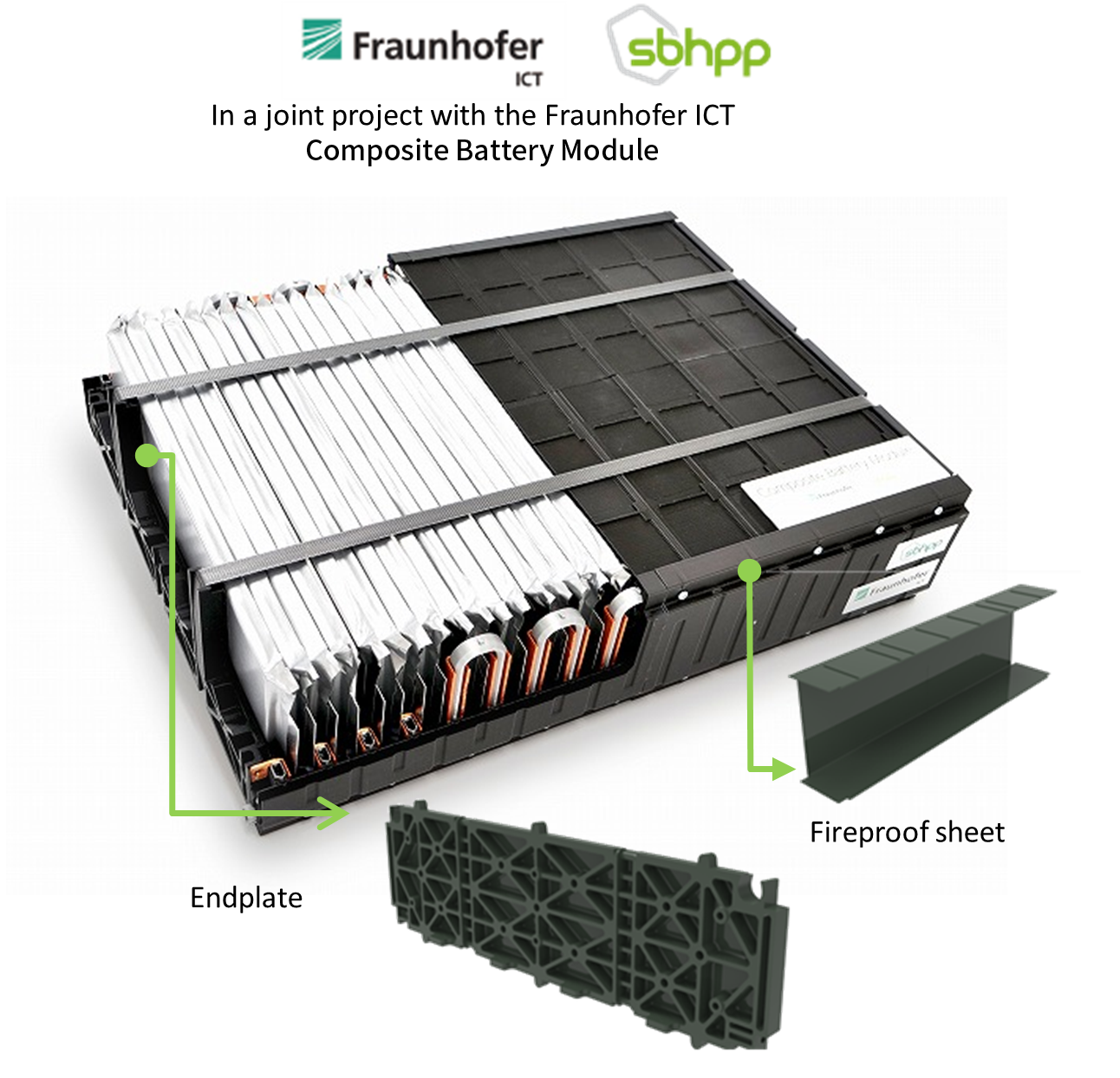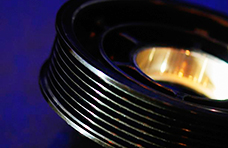October 16, 2024
Tokyo, Japan - Oct. 16, 2024, Sumitomo Bakelite Co., Ltd. (TOKYO: 4203 HQ: Shinagawa-ku, Tokyo, President and Representative Director: Kazuhiko Fujiwara) is pleased to announce the development of phenolic molding compounds with excellent fire resistance for EV batteries. Phenolic Compound is a moldable composite that has excellent flame retardancy and thermal propagation resistance, contributing in solving one of the biggest safety issues in EV batteries. As a proof of concept, in collaboration with the Fraunhofer ICT, Sumitomo Bakelite Co., Ltd. is developing the Composite Battery Module, which actively applies thermosetting molding material to EV battery modules. By proving the added value of our technology, we will accelerate technology development for EV batteries and propose EV battery solutions to customers.
Background
|
As the capacity of electric vehicle batteries increases, it becomes possible to extend the driving range and reduce charging time. However, with these advancements, safety concerns related to thermal runaway have emerged. Thermal runaway refers to a state in which the temperature inside the battery rapidly increases and becomes uncontrollable, potentially leading to fire or explosion in severe cases. With the increasing capacity of batteries, the risk of thermal runaway has also increased. Therefore, there is a demand for new technological developments that can delay the ignition and propagation of thermal runaway. Various materials used in battery components need improvement of their fire resistance to reduce the risk of thermal runaway. Thermoplastics, such as engineering plastics, have been widely used for fire-resistant plates, insulating boards, pressure relief valves, and other parts. However, they have limitations in terms of fire resistance as they can melt when exposed to heat. We have focused on the excellent fire resistance of thermosetting resins that do not melt even when heated, and we are offering phenolic, unsaturated polyester and diallyl phthalate molding compounds in our lineup. We have a dedicated PM-5800 series of phenolic molding compounds specifically designed for battery components, which excel in fire resistance. These materials have been widely adopted in the market. |

|
About the fire resistance phenolic molding material: PM-5820
Aiming to contribute to further safety improvements, we have developed the PM-5820 phenolic molding compound with significantly improved fire resistance compared to our conventional lineups. This material has the unique ability to greatly suppress material deformation and ash progress even during continuous 10-minute exposure to a torch burner with more than 40 times the heat intensity of the standard burner used in the UL 94 V flammability test. As a result, it is expected to effectively delay the progression and propagation of thermal runaway.
Torch burner (2.2 kW) 10 min continuous flame test
- Sample size 120 mm x 120 mm x thickness 1 mm
- After continuous flame 10 min



Phenolic resin molding compounds for battery parts
| Item | PM-5800 Light weight |
PM-5810 High strength |
PM-5820 High fire resistance |
X655FR High fire resistance |
|
|---|---|---|---|---|---|
| Fire resistance (continuous flame resistance) |
to UL94 V burner | ++ | ++ | ++ | ++ |
| to UL94 5V burner | ++ | ++ | ++ | ++ | |
| to torch burner | ○ | + | ++ | ++ | |
| Specific gravity | - | 1.52 | 1.78 | 1.91 | 2.09 |
| Flexural strength | MPa | 125 | 210 | 190 | 200 |
| Flexural modulus | GPa | 9 | 16 | 21 | 26 |
| Dielectric breakdown strength (S/S) |
MV/m | 10 | 9 | 10 | 14 |
- Above value is typical, not guarantee.
- Fire resistance performance - tested by Sumitomo Bakelite Co., Ltd. method
Test method - One side of 120mm x 120mm x 2mm thickness test specimen was exposed to continuous flame from each burner for 5 minutes.
Judgment criteria
++ No flame penetration and suppression of charring on the back side (cold side)
+ No flame penetration, but charring on the back side (cold side) was progressing
o Flame penetration occurs within 2 minutes
This material has excellent injection moldability such as thin wall moldability and has a high degree of freedom in the shape of parts. By using this material instead of engineering thermoplastics, it is possible to realize complex plastic parts with excellent fire resistance.
|
Additionally, it can contribute to space-saving and improved safety in EV battery components by addressing the design challenges associated with sheet-like plastic materials such as FRP (Continuous Fiber Reinforced Plastics) and SMC (Sheet Molding Compounds) used for their fire resistance in EV battery applications, as well as inorganic sheet materials such as mica sheets. |

Complex shaped parts can be molded by injection molding |
About the Composite Battery Module
We are currently engaged in the Composite Battery Module development in collaboration with the Fraunhofer ICT. The objective of the development is to create conceptual EV battery module in order to explore and propose alternative structures using thermosetting composite materials. We plan to conduct actual battery module operation tests and gather data in 2025.

About the Future
Through the development of materials that contribute to addressing the challenges of EV batteries and the verification of actual units in the Composite Battery Module development, we aim to accelerate electrification solutions to our customers. With these efforts, we aim to achieve annual sales of more than 5 billion yen in 2030 and further expand our business.
Related Information
For inquiries on this information
Material Solutions Sales Division, Sumitomo Bakelite Co., Ltd.


